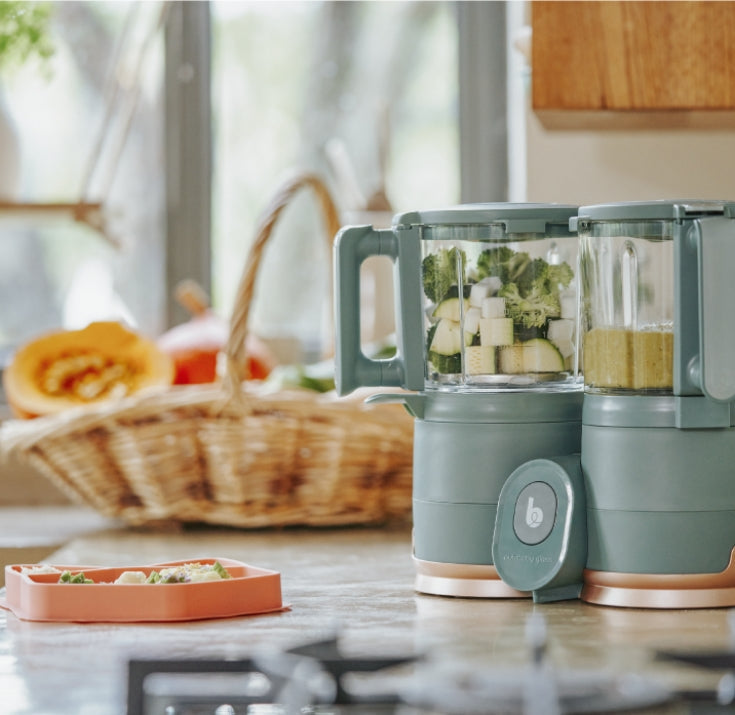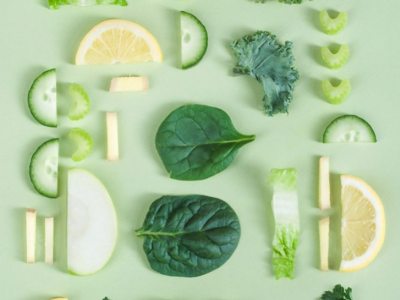For National Weaning Week, we've edited together expert tips, do's and don'ts and helpful hints in this beginner's guide to the wonders of weaning. Here's what to expect and where to start with your weaning journey.
A is for Allergies
Even if your family has a history of allergies to foods such as milk, nuts and eggs, medical experts will mainly advise not to exclude these from baby's diet, but to be alert when introducing these individually. Find out more about baby allergies and weaningon the Bliss website.
B is for Baby-led weaning
this is the method of allowing baby to explore feeding themselves rather than being spoon-fed. This method has several development benefits, including helping them to develop the pincer action when picking up pieces of food.
C is for Chewing fists
This is one of the more common weaning myths that your baby is ready for the solid food! Look out for a combination of signs rather than pinning it to one. Every baby is different and will be ready at different stages, from around 4 - 6 months usually.
D is for Dinner table
Encourage them to eat when you do and at your usual family mealtimes. This will enable you to let them try things you are eating and watching others eating will allow them to follow by example.
E is for Experience
At the very beginning ensure you continue to feed your baby milk, so that they aren’t hungry. Their first experience of weaning should be about them trying it and exploring it rather than filling up on it. To begin with, you’ll find they won’t eat anything in any great volume, so food will be more of a bonus to their usual milk feeds. As they become increasingly used to tasting and eating more food, then you can phase out their milk consumption.
F is for Foodii pouches
For those of you who are making baby purees from scratch, reusable Foodii pouches are the perfect solution for easily transferring, storing and feeding individual meals - at home or on-the-go! Screw on one of the two easy feeding tops to the pouches and feed baby mess-free or allow older babies to learn to feed themselves.
G is for Gag reflex
If they haven't already done this before the weaning stage, your baby's ability to gag easily will be more sensitive initially. Don’t worry, it’s simply a natural response to prevent choking. As new infants, they have no skills to get an unexpected item out of their mouth. As they grow their gag reflex moves further back in their mouth and the frequency of gagging when they eat will lessen.
H is for Honey
Avoid giving them honey before 12 months of age. Spores of Clostridium botulinum bacteria can be found in honey and when ingested by an infant, can release the toxin that causes botulism. Babies under 1 years old have not yet developed the defence to cope with this toxin, so it can be very dangerous.
I is for Iron
Your baby is born with a natural store of iron, but around 6 months is when this will start to deplete. It’s therefore important to introduce foods rich in iron too.
J is for Jelly + Juice
Jelly and juice – consider avoiding these. Despite their soft texture, jelly cubes are prone to getting stuck on the way down. Fruit juice can have high concentrations of sugar which should be avoided or diluted well with water.
K is for Kale
...and other leafy greens. Among the most nutrient-dense foods on the planet, it is unrivalled for brain development, heart health and works as a natural anti-inflammatory. Add kale into purees and baby omelettes.
L is for Lumpy textures
If making baby purees from scratch, vary the consistency to get your baby used to different textures. With Nutribaby+ dual blender and steamer, 3 blending speeds allow easy control of this!
M is for Mess!
Although instinct tells us mess is not to be encouraged, the process of weaning is about your baby exploring foods, recognising the differences and understanding their preferences. A lot of it will end up on them and even more on the floor. Put their highchair on a wipeable surface and have a wet cloth at the ready!
N is for Natural handle
When taking the baby-led weaning approach, opt for ingredients that are naturally easy for them to pick up and hold - things like half a banana and steamed broccoli florets. Alternatively cut up food into sticks or strips for them.
O is for Organise
Organise mealtimes according to daily activities, allowing time for them to choose what they want to eat and to do so at their own pace. Set up mealtimes way in advance if you need to be somewhere else.
P is for Premature baby weaning
If your baby was born prematurely, you won't be alone in wondering when to start weaning them. Many professionals will encourage parents to look for the usual tell-tale signs that baby is ready to wean, rather than assume they will be older than the usual 4-6 months weaning window.
Q is for Quantity
Up until the age of 1, it is usually recommended that milk is your baby’s main source of nutrition. The first 6 months or so of their weaning journey isn't so much about portion sizes, as it is learning to transition onto solids. Allow them to explore, taste and get used to recognising when they are hungry and full up.
From 6 months, present them with 2-3 varied and balanced meals a day as a guide. Check out forums like Mumsnet which are great for giving mum-to-mum advice about feeding your baby.
R is for Rejection
Don’t worry if your baby seems to reject a particular food at the beginning. Simply revisit it another day - this exercise is all about getting them used to a variety which will come in time. Your baby can try foods up to ten times before deciding to like it!
S is for Savoury
Introducing savoury foods more than sweet from the off is important for teaching your baby healthy taste habits.
T is for Teething
Your baby is likely to be ready to wean around the same time they will start teething. Due to the pain, you may notice they have a lack of appetite some days and then a hungry day or two when the tooth has come through.
Madeformums recommends trying them with soft purees, cold smooth food which can be soothing on their gums and in some cases, chewable food which can help to relieve the pain.
U is for Unfussy eater
Building their confidence to try a wide variety of foods and presenting them with variety from the earliest stages is the best way to encourage an unfussy eater as an adult!
V is for Variety
Weaning is all about food texture and diversity. Offer them as much variety as possible and even give them baby-friendly foods that you are eating at the same time.
W is for Whizz
Whizz up leftovers into baby purees! Waste not, want not!
X is for eXtra
Batch cooking baby meals will be real god send when you are fully immersed in weaning! 2 or 3 three different recipes made in bulk and stored away for the week, will keep enough variety in their diet and make mealtimes much easier.
Y is for Yoghurt
TIP: Mash up fresh fruit with a dollop of full fat natural yoghurt for a low-sugar alternative to supermarket baby pots.
Z is for Zinc
Important for cognitive development, introduce zinc-rich foods to your baby through purees and small food pieces that they can pick up. Foods such as beans, pulses and red meat are high in zinc. This mineral also enhances our sense of taste and smell, which is a crucial part of your baby exploring a wide variety of foods.
For safety advice about feeding your baby, download the British Red Cross Baby and Child First Aid app.
Looking for more recipe inspo? Check out our Baby's First Easy-to-make Puree recipes.






Leave a comment
This site is protected by reCAPTCHA and the Google Privacy Policy and Terms of Service apply.